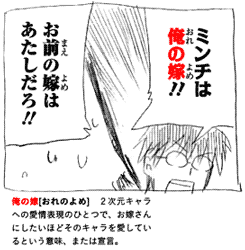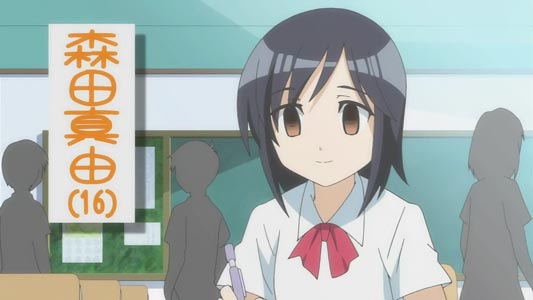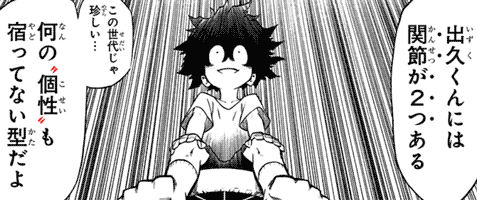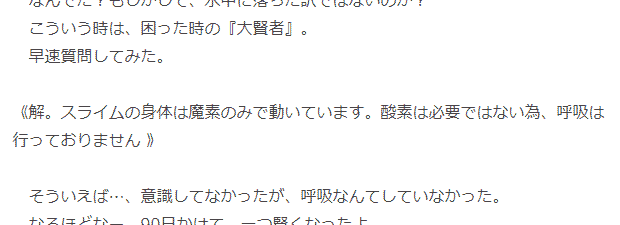In Japanese, "brackets," kakko 括弧, refers to symbols that enclose text such as 【】, (), 『』, 「」, 〈〉, 《》. They're generally like English brackets, except that Japanese brackets may get rotated 90 degrees when Japanese is written vertically.
For [], {} used in examples in this site, see Reading The Examples.
In Japanese
The word for "brackets" in Japanese is kakko 括弧, however:
Sometimes kakko means kakkou 格好, "appearance," like in kakko-ii かっこいい, "cool."
Sometimes kakko is translated to "parentheses" instead. In English, brackets are symbols that enclose text, and that includes parentheses, but the term "brackets" alone typically refers only to the square brackets, not to parentheses.
| Type of bracket | Also called | |
|---|---|---|
| [] | Square brackets | Brackets |
| () | Round brackets | Parentheses |
| {} | Curly brackets | Braces |
| ⟨⟩ | Angle brackets | Chevrons |
How to use:
- hajime-kakko
初め括弧
Starting bracket. Opening bracket. - owari-kakko
終わり括弧
Ending bracket. Closing bracket. - kakko-hiraki
括弧開き
Opening a bracket. Open bracket. - kakko-toji
括弧閉じ
Closing a bracket. Close bracket.- kakko tojriu
括弧閉じる
- kakko tojriu
- kakko-hiraki something kakko-toji
括弧開き〇〇括弧閉じ
Open bracket, something, close bracket.
Open parenthesis, something, close parenthesis. - kakko something kakko-toji
括弧〇〇括弧閉じ - kakko something
括弧〇〇
【】, Square Brackets
The 【】 are the Japanese square brackets. They're in some ways used in places where we'd use parentheses in English, specially when adding extra, parenthetical information. They're called:
- sumi-tsuki-kakko
隅付き括弧
Corners-attached brackets. Brackets with corners.- In English, they're also called "lenticular brackets."(util.unicode.org:【) to distinguish from English's square brackets.
In Dictionaries
In dictionaries, the square brackets may contain either the reading of a kanji (the furigana ふりがな), or the kanji 漢字 of a word, depending on the design of the dictionary. For example:
- 漢字【かんじ】
- かんじ【漢字】
Above, ka-n-ji かんじ in hiragana ひらがな shows the reading for 漢字.
Dictionaries may also use dashes or dots to separate the okurigana 送り仮名, e.g.:
- ta.beru
た・べる【食べる】
To eat.- The middle dot ・ after the ta~ た~ separates it from the okurigana ~beru ~べる.
- Context: an ad for Nihongo Gokan no Jiten 日本語語感の辞典, "Japanese nuance dictionary," depicting various apologetic gestures, the last (leftmost) one being the dogeza 土下座. The text aren't terms for the gestures, but words related to apology. Only the first item has a word enclosed by brackets with its reading after it, the rest are only enclosed by brackets.
- ayamaru
【謝る】あやまる
To apologize. (title of the ad.) - shitsurei
失礼
Excuse me. Pardon. Said when doing something that "lacks respect," literally, hence why you excuse yourself. - gomen
御免
Forgive me. Sorry. - sumanai
済まない
Sorry. Literally in the sense of something done that "won't disappear," so it's a regrettable mistake or gratitude that won't be forgotten, but in practice it's used for all sorts of minor stuff. - moushi wake nai
申し訳ない
[I] have no excuse. (nai, arimasen, gozaimasen, mean the same thing.) - chinsha
陳謝
To explain yourself and apologize. Used when not only you're at fault, but you also have some explaining to do, e.g. to explain to a client why things have gone wrong, and apologize to them for things going wrong. - shazai
謝罪
Apology, in the sense of assuming fault, "crime," "sin," tsumi 罪.
- Context: a wife doesn't understand what her husband is saying.
- Minchi wa ore no yome!!
ミンチは俺の嫁!!
Minchi is my waifu!! - omae no yome wa atashi daro!!
お前の嫁はあたしだろ!!
Your wife is me, [did you forget]!! - Footnotes:
- ore no yome: nijigen kyara e no aijou hyougen no hitotsu de, {{{oyome-san ni shitai} hodo sono kyara wo aishiteiru} toiu} imi, mata wa sengen.
俺の嫁【おれのよめ】 2次元キャラへの愛情表現のひとつで、お嫁さんにしたいほどそのキャラを愛しているという意味、または宣言。
My waifu: one expression of affection toward 2D characters, the meaning {being [that] {[you] love that character enough {to want to make [them] [your] wife}}}, also a way to declare that.- Inside 【】is the furigana for 俺の嫁.
In Titles
Online, in titles, square brackets sometimes enclose the category of a page (e.g. news) or video (on Youtube, NicoNico, etc.)
Webpages set their title using a <title> HTML tag in the page's metadata, which may not appear in the body of the page itself, but can be seen as the title of the page as a Google results, or when shared on Twitter, and so on.
Some examples:
- Putting koushiki 【公式】, literally "public-style," in the sense of a public statement, an "official" statement, in a page title to claim it's the official page, website, or forum, or publication of a brand. Warning: anybody can write "official" in the title of something, even if it isn't official. The examples below are links to pages with "official" in the title:
- 【Koushiki】 Jei-Riigu Koushiki Saito
【公式】Jリーグ公式サイト(J.LEAGUE.jp)(accessed 2021-08-28)
【Official】 J-League Official Site.- As in the Japan Professional Football League.
- 【Koushiki】 "{{Tensei shitara} Suraimu datta} Ken" Pootaru-Saito
【公式】「転生したらスライムだった件」ポータルサイト(accessed 2021-08-28)
【Official】"[That Time] {[I] was a Slime {[After] Reincarnating}}" Portal Site.- As in the anime "That Time I Got Reincarnated as a Slime."
- Portal means a "web portal" in this case.
- 【Koushiki】 Jei-Riigu Koushiki Saito
- A category for indexing, such as author name.
- 【Ado】ギラギラ(accessed 2021-08-29)
【Ado】踊(accessed 2021-08-29)
Among others, are songs uploaded by Ado on youtube featuring the artist's name within brackets in the title. - [Emu-vii] REOL - YoiYoi Kokon
[MV] REOL - 宵々古今(accessed 2021-08-29)
[Music Video] REOL - Every Evening Past and Present.- yoiyoi is archaic Japanese. It's a plural or frequency reduplication of yoi 宵, "evening," so it means reoccurring across multiple evenings, just like hibi 日々, "every day," means reoccurring across multiple days.
- Here, the text in brackets, MV, means Music Video, and it's REOL, れをる, that is the name of the artist.
- 【MAD】 a type of video in which someone edits an existing video and audio to change its meaning, from the English word "mad," as in "crazy." Nowadays often means the same thing as AMV, Anime Music Video, in which a fan edits clips of an anime with a song..
- 【TAS】 in game-play videos refers to Tool-Assisted Speedrun, which looks like cheating, but it's closer to puppetry.
- kami 神, "literally "god," "divine," is used as slang qualifying prefix for all sorts of God-tier things, like, kami-kai 神回, "divine episode," kami-shiin 神シーン, "divine scene," kami-sakuga 神作画, "divine animation," and so on.
- 【Touhou】 Bad Apple!! Pii-Vi 【Kage-e】
【東方】Bad Apple!! PV【影絵】(accessed 2021-08-29)
【Touhou】 Bad Apple!! PV 【Shadow Picture】
- Touhou is the name of a game.
- A PV is a Promotional Video.
- 【C91】 Msjidesunon 【新刊】(accessed 2021-08-29)
- "C<number>" refers to the Comiket, コミケット, a biannual doujinshi 同人誌 convention. The 91st instance was held in December of 2016. Artists use such tags on samples of works they'll publish at the convention uploaded as illustrations to Pixiv, to talk about their attendance, etc.
- shinkan
新刊
New publication. New book.
- 【Ado】ギラギラ(accessed 2021-08-29)
- A text introducing the title or heading of an article, such as "BREAKING," i.e. sokuhou 速報, "quick-report," "news flash." Apparently, the term for such phrases is "kicker."(english.stackexchange.com:Is there an “official” name for a heading prefix, or qualifier?)
- 【Kinkyuu Sokuhou】 Misairu Hassha, Sono Toki no Fuji-terebi wa.. Kome-tsuki
【緊急速報】ミサイル発射 その時フジテレビは・・コメ付 20170829(accessed 2021-08-29)
【Urgent News Flash】 Missile Launch, At That Time, Fuji TV [was]... with Comments.
- The number at the end of the title is the date, 2017-08-29, by coincidence precisely 4 years ago. For details about the incident, see 'Missile passing': Japan wakes to ominous warning about North Korean launch - theguardian.com.
- 【Kome-tsuki】
【コメ付き】
Comments-attached. With comments.
A tag added to Youtube videos that were originally posted on NicoNico, and that have comments from the NicoNico website included in the video.- On NicoNico, users' comments show up over the video sliding from the right to left at the time they're written, e.g. a comment posted in response to something that happens in the 2nd minute of the video slides in at the 2nd minute so it has appropriate context. On Youtube, such feature doesn't exist. The closest thing is the real-time chat on recorded streams.
- "sm<number>" is an identifier format for videos on NicoNico, so if a Youtube video description contains something like, you know where it's from.
- 【Jiko Shoukai】 Hajimemashite! Kizuna Ai desu
【自己紹介】はじめまして!キズナアイですლ(´ڡ`ლ)(accessed 2019-01-29)
[Self-Introduction] Nice to Meet Tou! I'm Kizuna Ai. - 【Mane Shicha Dame】 {Machigatta} O-e-kaki Kouza
【真似しちゃダメ】間違ったお絵かき講座(accessed 2021-08-29)
【Don't Imitate】 {Wrong} Drawing Course.- A video listing common mistakes done in illustration.
- 【Kinkyuu Sokuhou】 Misairu Hassha, Sono Toki no Fuji-terebi wa.. Kome-tsuki
(), Round Brackets
The round brackets are used in Japanese in various ways: they can contain the furigana for a phrase; when coming after someone's name, they typically contain their age, or other personal information, such as marital status or gender; on the internet, they come at the end of sentences containing actions, and work in a certain way like asterisks in English.
They're called:
- maru-kakko
丸括弧
Round brackets. Parentheses.
Anime: Morita-san wa Mukuchi 森田さんは無口 (Episode 1)
- Context: Morita Mayu's name in a box, with her age, 16 years old, inside parentheses.
- Context: characters from Gintama do odd jobs. Someone left a monstrously huge dog outside their home, with a letter that said "please take care of my pet."
- ......... sore dake ka?
・・・・・・・・・それだけか?
.........only that? (that's all that is written?) - kakko-warai to kaite-arimasu
(笑)と書いてあります
(laugh) is [also] written. (literally.) - waraeru kaaaaaaa!! kakko ikari kakko-toji
笑えるかァァァァァァ!!(怒)
[How] can [I] laugh!! (anger)- waraeru - potential verb from warau 笑う, "to laugh."
- See also: tsukkomi ツッコミ.
- Although the manga makes no distinction, in the anime adaptation (10th episode), Shinpachi 新八 pronounces (笑) as kakko warai, without kakko-toji 括弧閉じ, "close [round] bracket," while Gintoki 銀時 pronounces (怒) as kakko ikari kakko-toji.
- uwa'!!
うわっ!!
See the article about parentheses for details.
「」, 『』, Hook Brackets
The 「」 and 『』 are single and double quotation marks. They're called:
- kagi-kakko
鉤括弧
Hook brackets.- As in a fishing hook, which has a bent tip, not as in the swinging punch used in boxing.
- Not to be confused with the homonym kagi 鍵, "key."
- ni-juu kagi-kakko
二重鉤括弧
Double hook brackets.
They're used in several ways. They can quote text like English quotation marks, but they can also surround names of fictional works and people, and emphasize text.
See Quotation Marks for details.
- Context: Chiyoda Momo 千代田桃, who can't cook like a normal person, is impressed the cooking of Shamiko シャミ子.
- ...sou da ne, Shamiko φ {futsuu ni} win'naa itameteta mon ne
・・・そうだねシャミ子普通にウィンナー炒めてたもんね
That's right, Shamiko was frying wieners {normally}.- itameteta - contraction of itamete-ita, past form of te-iru form of itameru 炒める, "to fry."
- ryouri wa dekiru-n-da ne
料理はできるもんだね
Cooking, [you] can do, huh.- A contrastive wa は, implicating Shamiko can't do other things normally, because she's a klutz, but cooking she can do.
- "wa" tte nan-desu ka!!
「は」ってなんですか!!
What do you mean by "wa"??!!
- Context: a character sitting in agura あぐら position introduces himself, as does his wife.
- washi wa {San no chichioya de} Seto-uchi-gyorui-rengou Seto-gumi Kumi-chou "Seto Gousaburou" ja
儂は燦の父親で瀬戸内魚類連合瀬戸組 組長 『瀬戸豪三郎』じゃ
I {am Sun's father and} Seto's Inner Fish-kind Alliance, Seto Group's Boss, "Seto Gousaburou."- ja じゃ - same as da だ copula, used by characters that sound old.
- dosu
ドス
*thud* - sono tsuma "Seto Ren"
その妻『瀬戸蓮』!
[His] wife, "Seto Ren"! (literally.)- sono その - "of the aforementioned."
- sono hito no tsuma
その人の妻
The aforementioned person's wife.
″″, 〝〟, Whisker Brackets
The double prime symbol is sometimes used as a quotation mark in Japanese, specially when used to emphasize text. It's called:
- daburu minyuuto
ダブルミニュート
Double minute. (because primes are used to show minutes and seconds in timings.) - nono-kagi
ノノカギ
nono hooks. (from the shape.) - hige-kakko
髭括弧
Beard brackets.
Whisker brackets.
- Context: in a series about people that have powers called quirks, a doctor examines Midoriya Izuku 緑谷出久, talks about how quirkless people have two joints in his pinky toe, and then says:
- Izuku-kun niwa kansetsu ga futatsu aru
出久くんには関節が2つある
Izuku-kun has two joints. - {kono sedai ja mezurashii...} {nan'no "kosei" mo yadottenai} kata da yo
この世代じゃ珍しい・・・何の“個性”も宿ってない型だよ
A type {rare in this age}, [that] {doesn't [contain] any quirk}.- yadoru
宿る
To dwell. (in this case, for a quirk to dwell in his body, i.e. for a quirk to be contained in him, for him to contain a quirk.)
- yadoru
〈〉,《》, Angle Brackets
Angle brackets are sometimes used as quotation marks, specially with messages generated by computers, robots, and computer-like characters. They're called:
- yama-kakko
山括弧
〈〉 "mountain brackets." - nijuu-yama-kakko
二重山括弧
《》 "double mountain brackets."- Not to be confused with « and », which are called guillemets.
- Context: a guy was reincarnated in another world as a slime, with a knowledgeable guide called "great sage." Then, he falls in the water, but doesn't suffocate.
- kouiu toki wa, {komatta} toki no "dai kenja"
こういう時は困った時の『大賢者』
In times like these, the "great sage" of {troubled} times. (literally.)- It's a good idea to consult with her when you're troubled, hence {komatta} toki no, "of when {[you] are troubled}."
- sassoku shitsumon shite-mita
早速質問してみた
[I] tried asking [her] promptly. - "kai. suraimu no karada wa masou nomi de ugoite-imasu.
sanso wa hitsuyou dewanai tame, kokyuu wa okonatte-orimasen" - 《解。スライムの身体は魔素のみで動いています。酸素は必要ではない為、呼吸は行っておりません 》
"Answer. the body of a slime moves by magic particles alone. Since oxygen isn't necessary, [the act of] breathing isn't being performed." - souieba..., ishiki shitenakatta ga, kokyuu nante shite-inakatta.
そういえば…、意識してなかったが、呼吸なんてしていなかった。
[Now that you mention it...], [I hadn't paid attention] but, [I] hadn't been breathing.
〔〕, 〘〙, Tortoise-Shell Brackets
The 〔〕 and 〘〙are used to quote or emphasize text. They aren't commonly used in Japanese. They're called:(business-textbooks.com)
- kikkou-kakko
亀甲括弧
〔〕, tortoise-shell bracket.- Due to their
bestagonalhexagonal shape. - This is the official English name for this character.(util.unicode.org:〔)
- Due to their
- nijuu-kikkou-kakko
二重亀甲括弧
〘〙, double tortoise-shell bracket.
{}, Curly Brackets
The term for curly brackets in Japanese would be nami-kakko 波括弧, "wave brackets," for they're wavy.
References
- 〔 - util.unicode.org, accessed 2021-08-28.
- 【 - util.unicode.org, accessed 2021-08-28.
- 9種類の括弧の読み方と使い分け方、順番 - citation-business-textbooks.com, accessed 2021-08-28.
- Bracket - en.wikipedia.org, accessed 2021-08-29.
- Is there an “official” name for a heading prefix, or qualifier? - english.stackexchange.com, accessed 2021-08-29.








No comments: